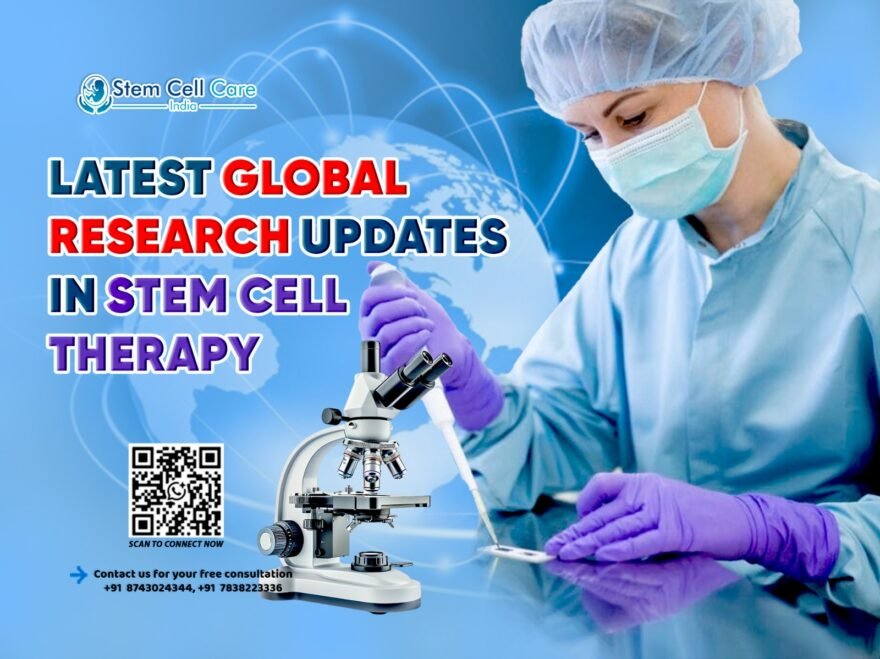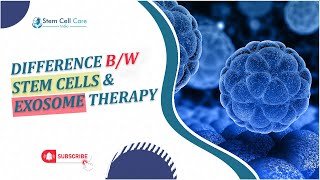Table of Contents
Summary: Stem cell treatment is no longer science fiction, but it is now a clinical reality. From neurological conditions such as Parkinson’s and Alzheimer’s to chronic conditions such as heart disease and diabetes, new global research is opening doors where conventional medicine does not. This blog discusses the latest global advances, the expanding role of Asia (India specifically), and what the implications of these discoveries are for patients worldwide.
Stem cell therapy has moved from being a futuristic concept to a practical treatment option across the globe in the last decade. A wave of interest has come forth for regenerative medicine, mainly stem cell therapy. It uses stem cells, which have the characteristic potential to become specialized cells to replace and restore damaged cells.
In 2025, research all over the world is progressing from test tube experiments to large-scale clinical trials, where preliminary reports indicate safety, effectiveness, and life-altering potential for patients.
Let us see the new world developments in stem cell therapy and learn how they are revolutionizing the future of medicine.
What Is Stem Cell Therapy?
Stem Cell Therapy harnesses the body’s smallest unit of life, cells that can be transformed into various tissue types to rebuild or replace ailing organs. The most frequently used form of stem cells in India is mesenchymal stem cells (MSCs) found in bone marrow, fat tissue, and the umbilical cord. They are now being thought of as a therapy for:
- Orthopedic conditions such as arthritis and joint injuries
- Neurological illnesses such as autism, cerebral palsy, and stroke,
- Autoimmune illnesses such as multiple sclerosis and diabetes
- Organ-specific diseases such as liver failure and heart disease.
Significant Breakthrough in hPSC Therapies
To tell you about the most exciting updates that are coming from human pluripotent stem cell (hPSC) derived therapies. Here are the following:
- As of late 2024, over 115 international clinical trials are assessing 83 different hPSC-derived products.
- Already, over 1,200 patients have been treated with these cells for conditions like eye disease, neurological disorders, and certain cancers.
- Safety information is comforting; no major complications have been noticed so far.
This is a big leap from small, pilot-scale trials to treatments that could become mainstream in the not-too-distant future.
Stem Cells & Neurological Disorders
Neurological disorders have long been among the most difficult to cure. Stem cell therapy is starting to alter this landscape:
Parkinson’s Disease: Bayer and BlueRock recently took their stem cell therapy into Phase III trials. The therapy uses stem-cell-derived dopamine-making neurons to assist in restoring motor function. If it works, it could revolutionize the standard of care for millions.
Alzheimer’s Disease: Initial research in China with the use of neural stem cells (such as those harvested from dental pulp and MSCs) is demonstrating memory and cognitive improvements. Though early, these findings hold promise for diseases long thought to be untreatable.
Other CNS Disorders: A review revealed 530 trials from 1998 to 2023 for neurological disorders, illustrating the rapid expansion of this area.
India’s Role in Stem Cell Innovation
Here are some of the breakthroughs made by researchers in India:
- Tulsi Therapeutics, a Hyderabad-based startup, has created Tulsi-28X, a stem cell + exosome therapy for chronic liver failure. Human trials are imminent.
- Increased clinical activity in autism, cerebral palsy, orthopedic disorders, and cardiac diseases.
- India is emerging as a center for high-quality, low-cost treatments, pulling in overseas patients with medical tourism.
Future of Stem Cell Therapy in India
The future is optimistic, with several trends beginning to gain traction:
- Broader use of personalized regenerative medicine applicable to the patient’s genome.
- Other regulatory-approved trials by the FDA/ICMR on testable safety and standardization
- Worldwide outreach of partnerships for low-cost innovations from India.
- More emphasis on long-term outcomes, and not just recovery for the patient in the years to come.
What Does It Mean for the Patients?
For patients worldwide, the research developments are a beacon of hope:
- Ailments such as Parkinson’s, Alzheimer’s, and heart failure could soon have novel, potent treatments.
- The patients in high-cost countries can avail themselves of facilities in countries such as India, where the treatment is cheaper without sacrificing quality.
- The future is headed for personalized regenerative medicine, where the therapies are individualized according to the patient’s condition, genetics, and medical requirements.
The Bottom Line
Stem cell therapy is not simply being tested in a lab; it is being increasingly used in clinical settings internationally. The possibilities of stem cells are being translated into reality, from neurological disease to organ regeneration, step by step.
If you are going to be treated with stem cell therapy or are interested in safe and effective therapies in India, contact Stem Cell Care India. Their background in safe care for global patients, expert consultative experience, and openness with the process support that they are the best option for patients everywhere.
Some Commonly Asked Questions
Q1. Are stem cell therapies safe in current clinical trials?
Ans. Yes, most of the trials thus far indicate stem cell therapies are safe, but with continued long-term follow-up.
Q2. Which disease holds the greatest promise of cure using stem cells?
Ans. Parkinson’s, Alzheimer’s, heart failure, diabetes, and chronic liver failure are yielding the most encouraging results.
Q3. Is stem cell therapy safe in India?
Ans. Yes. The ICMR and GMP guidelines are adhered to strictly by accredited hospitals and laboratories to maintain patient safety.
Q4. How can international patients gain access to treatment in India?
Ans. Stem Cell Care India organizes visas, travel, accommodation, and follow-up after treatment so that it is convenient.








